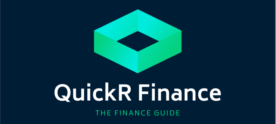Budgeting is an essential financial tool that helps individuals, families, and businesses plan and track their income and expenses. The process involves creating a plan for allocating resources over a specific period, usually a month, quarter, or year. A budget provides a roadmap for achieving financial goals, reducing debt, and building wealth. However, budgeting can be challenging, especially for those who are new to the process or lack discipline. In this article, we will explore different budgeting techniques and strategies that can help individuals and businesses achieve financial success.
- The 50/30/20 Rule
The 50/30/20 rule is a budgeting technique that divides income into three categories: needs, wants, and savings. It suggests that individuals and businesses should allocate 50% of their income to needs, 30% to wants, and 20% to savings. This technique is a great starting point for those new to budgeting, as it provides a clear framework for prioritizing expenses and achieving financial stability.
For example, let’s consider the budget for a family of four in Mumbai with a monthly income of INR 50,000. They would allocate INR 25,000 (50%) to their essential needs, such as rent or mortgage, utilities, groceries, and transportation. The family would then allocate INR 15,000 (30%) to their discretionary wants, such as dining out, entertainment, and vacations. Finally, the family would allocate INR 10,000 (20%) to their savings and debt repayment, such as an emergency fund or paying off debt.
- The Envelope System
The envelope system is a budgeting technique that involves dividing cash into separate envelopes for each expense category. The process involves creating a budget for each category, such as groceries, transportation, and entertainment, and putting the cash into an envelope labeled for each expense. Once the money in each envelope is spent, the category is considered “empty” until the next budget period. This technique is particularly useful for those who struggle with overspending and impulse buying.
For example, let’s consider the budget for a college student in Delhi who receives a monthly allowance of INR 10,000. The student may divide the money into envelopes labeled for groceries, transportation, entertainment, and other expenses. If the student spends all the money in the grocery envelope, they must wait until the next budget period to purchase more groceries. This technique encourages the student to be more mindful of their spending habits and avoid overspending.
- Zero-Based Budgeting
Zero-based budgeting is a budgeting technique that involves allocating every rupee of income to a specific expense category or savings goal. This technique requires individuals and businesses to start each budget period with a blank slate, reevaluating all expenses and income to create a new budget. This approach encourages individuals and businesses to prioritize expenses and cut back on unnecessary spending to achieve financial goals.
For example, let’s consider the budget for a freelance writer in Bengaluru who has an irregular income. At the beginning of each budget period, the writer may start with a zero-based budget by reevaluating all their expenses, including rent, utilities, food, and entertainment. The writer would allocate every rupee of income to these categories, ensuring that their expenses do not exceed their income. This technique helps the writer prioritize expenses and avoid overspending, even with an irregular income.
- The Cash-Only Method
The cash-only method is a popular budgeting technique that encourages individuals to use cash instead of credit or debit cards for all their expenses. This approach is particularly useful for people who tend to overspend and struggle to stick to their budget. By using cash for their purchases, individuals can become more mindful of their spending and avoid accumulating debt.
Here’s an example of how an individual can use the cash-only method to manage their monthly expenses in INR:
Suppose that John, a young professional, has a monthly budget of INR 30,000. He divides his budget into several categories, including groceries (INR 8,000), transportation (INR 5,000), dining out (INR 4,000), entertainment (INR 3,000), and miscellaneous expenses (INR 10,000).
At the beginning of the month, John withdraws cash for each category and puts it in separate envelopes labeled with the category name. He puts INR 8,000 in the grocery envelope, INR 5,000 in the transportation envelope, and so on. Each time he needs to make a purchase, he takes the appropriate envelope and uses only the cash inside it.
For instance, if John needs to buy groceries, he takes the grocery envelope and uses the cash inside it to pay for his purchases. He knows that once the cash is gone, he cannot spend any more money in that category until the next month.
Using the cash-only method has several advantages. Firstly, it helps individuals become more aware of their spending habits and make more mindful decisions about their purchases. Secondly, it allows individuals to stick to their budget by limiting their spending to the cash they have available. Finally, it can help individuals avoid accumulating debt and overspending on credit cards.
However, it’s important to note that the cash-only method may not be suitable for everyone. Some expenses, such as rent, utilities, and online purchases, may need to be paid through other methods. In such cases, individuals can set aside cash for those expenses in advance or use a different budgeting technique.
In conclusion, the cash-only method is an effective budgeting technique that can help individuals take control of their finances and avoid overspending. By using cash for their expenses, individuals can become more mindful of their spending and prioritize their expenses effectively.
- The Pay Yourself First Method
The Pay Yourself First method is a budgeting technique that involves setting aside a portion of income for savings and debt repayment before allocating funds to other expenses. This approach prioritizes financial stability and encourages individuals and businesses to prioritize long-term financial goals over short-term wants. The process involves setting up automatic transfers to savings accounts or debt repayment accounts before spending on other expenses. This technique helps individuals and businesses build wealth and achieve financial stability over time.
Here’s an example of how an individual can use the Pay Yourself First method to manage their finances:
Suppose that Jane, a recent college graduate, has a monthly income of INR 50,000. She wants to save INR 10,000 each month to build an emergency fund and invest in her retirement. Instead of waiting until the end of the month to save what is left, Jane decides to pay herself first by setting aside INR 10,000 from her salary each month.
Jane sets up an automatic transfer from her salary account to her savings account, which happens on the first day of each month. This way, she doesn’t have to worry about manually transferring the money or forgetting to do it altogether. She knows that she has to budget her expenses around the remaining INR 40,000 each month.
By paying herself first, Jane ensures that she is prioritizing her long-term financial goals and setting herself up for financial security. She also avoids the temptation to spend the money on discretionary expenses, which can easily eat up her budget and leave little room for savings.
Using the Pay Yourself First method has several advantages. Firstly, it helps individuals develop a savings habit by prioritizing their long-term financial goals. Secondly, it allows individuals to save consistently and avoid the temptation to overspend. Finally, it can help individuals build wealth over time and achieve financial security.
However, it’s important to note that the Pay Yourself First method may not be suitable for everyone. Individuals who have high levels of debt or financial obligations may need to allocate more of their income towards those expenses before saving for the future. In such cases, individuals can still use the Pay Yourself First method by starting with a smaller savings goal and gradually increasing it over time.
Summary
In conclusion, budgeting is a critical financial tool that helps individuals and businesses achieve financial success. There are many budgeting techniques and strategies available, each with its unique advantages and disadvantages. The key to successful budgeting is finding the technique that works best for your lifestyle and financial goals and sticking to it. By following a budgeting plan, individuals and businesses can reduce debt, build wealth, and achieve financial stability.





